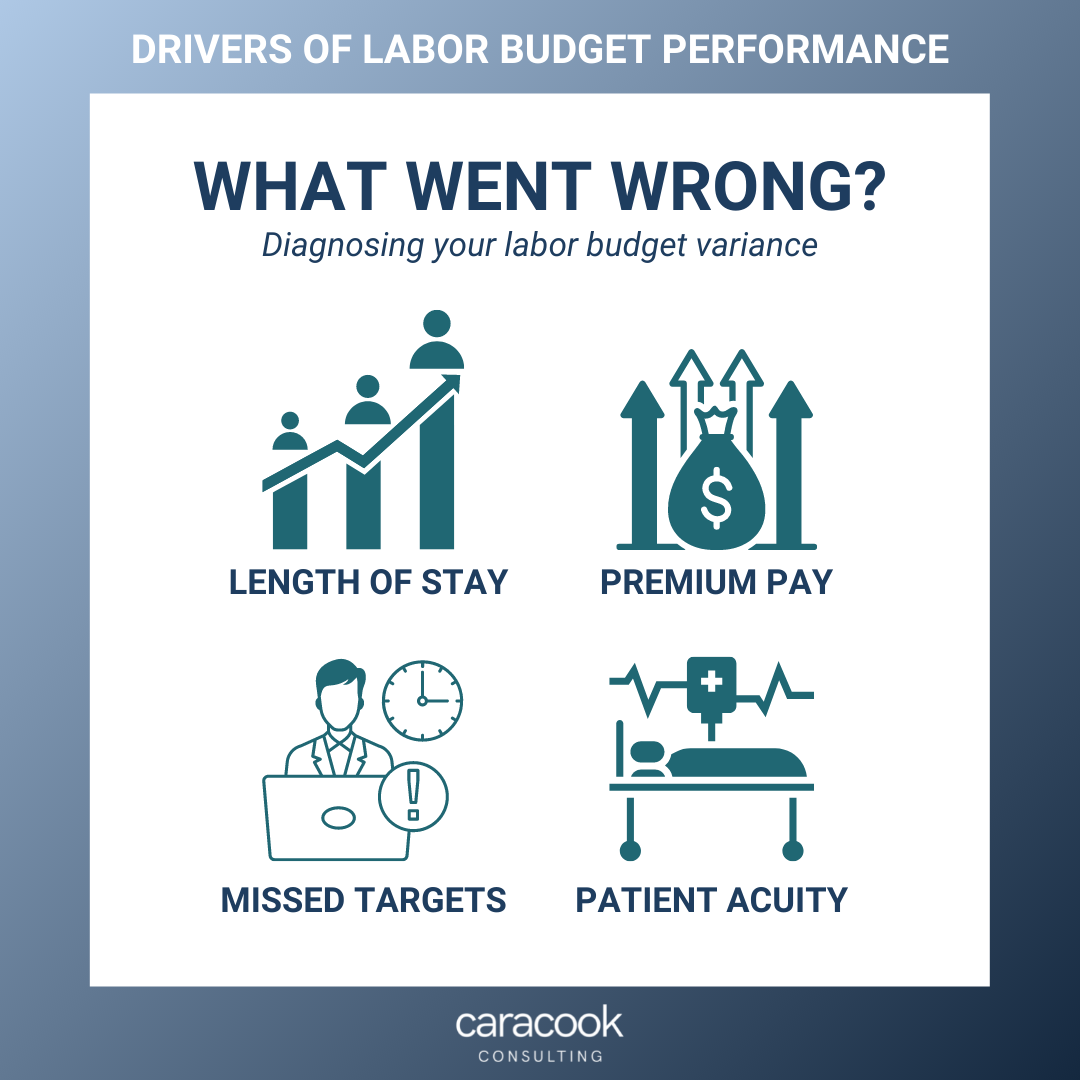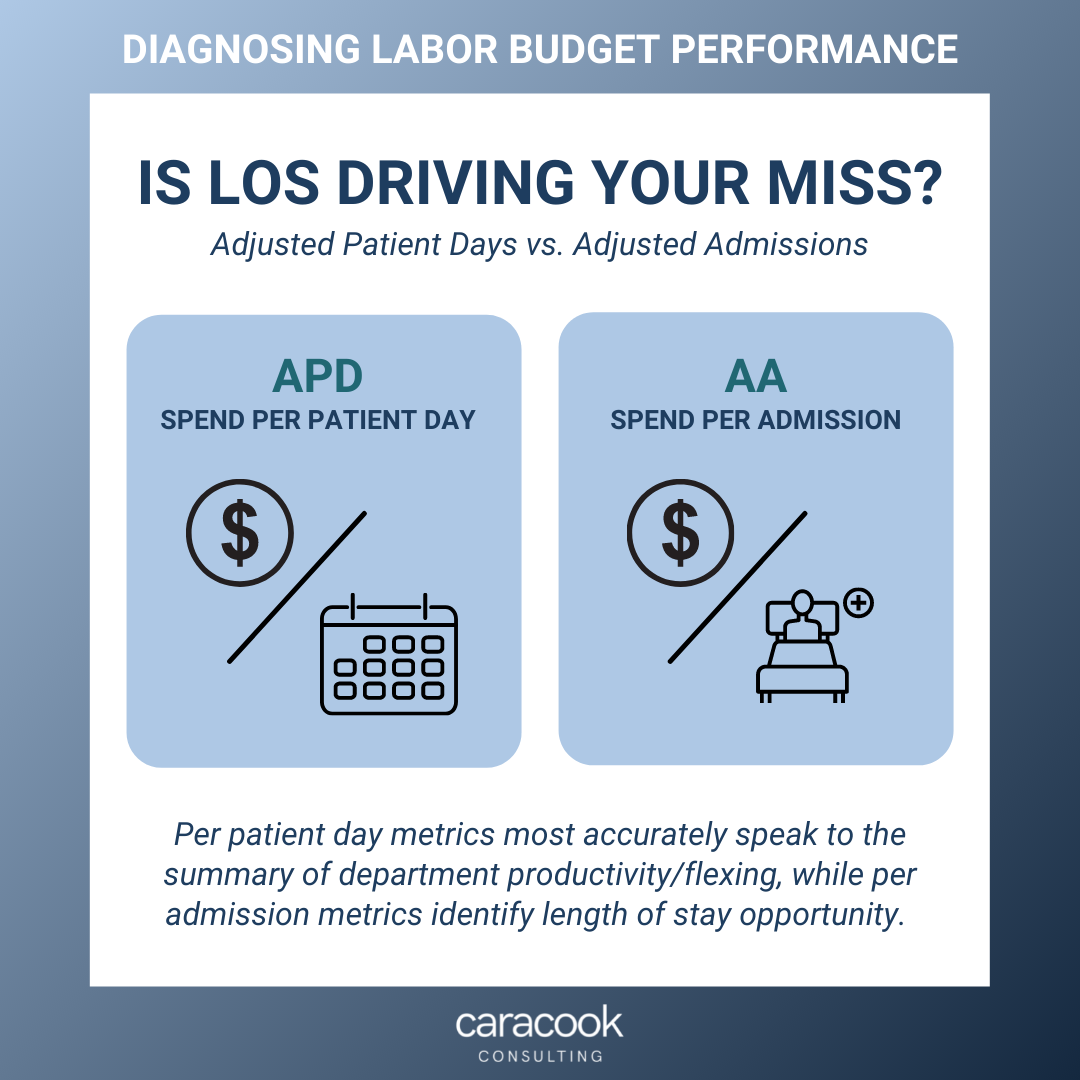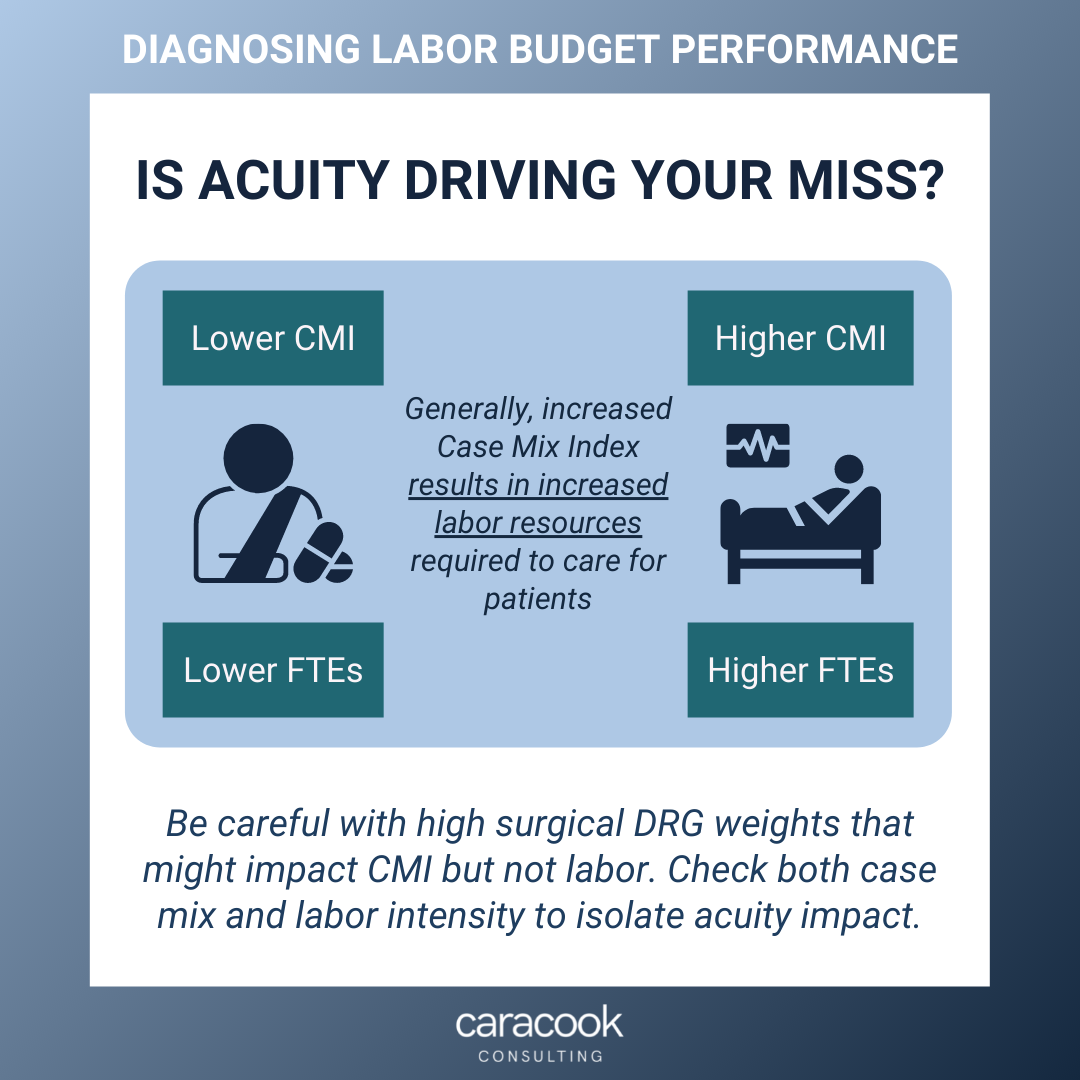labor budget performance top tips
MISSING BUDGET ALREADY?
If you've already been asked for a back to budget plan, you are probably not alone! Unfavorable variances are incredibly common in the first month of the year, as budgets can change significantly from one year to another. Salaries, wages, and benefits represent the largest and most controllable expense category - we recommend to start there!
WHAT WENT WRONG?
It is very important to correctly diagnose the drivers of unfavorable labor and productivity performance to ensure action plans are effective. If it takes multiple months to course correct, you may risk your organization's annual budget performance! This series explores our top tips for identifying the root cause of common labor variance drivers and the healthcare industry's best practices to get back on track.
MISSED TARGETS
Hospital labor budgets are a roll up of department productivity targets. If productivity targets are not met, there will be an unfavorable labor budget variance. We recommend focusing on individual department missed targets to identify back-to-budget opportunities, rather than only reviewing overall hospital productivity index percentage.
LENGTH OF STAY
Hospital labor hours and dollars should always be compared on a “per stat” basis, as with department productivity targets, to determine if a hospital responded to volume changes appropriately. We recommend reporting per AA and APD to most accurately diagnose opportunities. It is important to use per APD metrics to determine productivity opportunity and per AA metrics to determine total financial impact of inefficiencies of productivity and LOS.
RATE VARIANCE
If you’re favorable to budgeted FTEs but not salaries per patient day, this indicates a rate variance! Especially in today’s climate, many hospitals are flexing to volume appropriately, but still missing their labor budget due to increased contract labor rates and utilization. In this situation, ensure identified improvement initiatives are focused on reducing premium pay, rather than a staffing reduction.
ACUITY AS A DRIVER
Departments with higher patient ratios or higher labor cost per volume can drive labor intensity impact on a budget variance while the department is favorable to their productivity target. Individual department volume comparisons to budget can quickly identify FTE impact due to labor intensity, which should translate to the bottom line.
ACTION PLANS
Before creating your back-to-budget plan, ensure you have thoroughly reviewed performance and accurately diagnosed unfavorable drivers to ensure action plans actually drive improvement!







